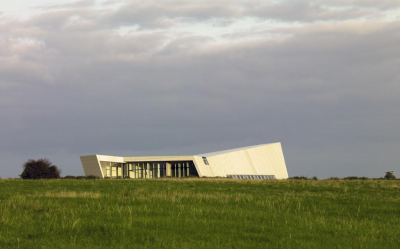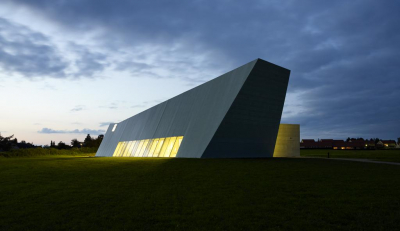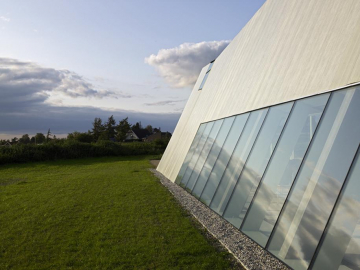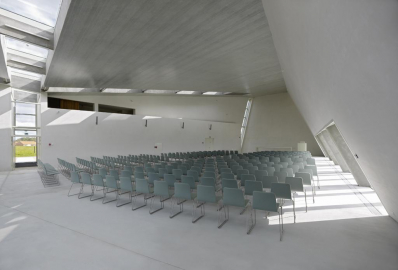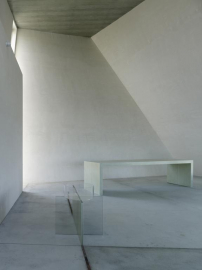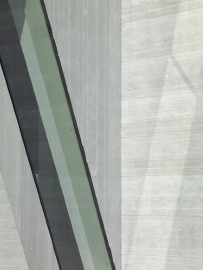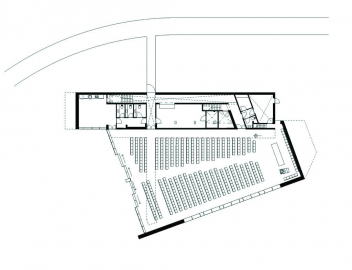Church of Holy Cross
The church of the holy cross was conceived as part of the landscape around Jyllinge. With its glass façade facing the fjord and a fishing net dividing the space of the church, the design clearly takes the history of the place seriously.
A GOOD PLACE TO BUILD A CHURCH
The place has an emotional power with its spatial topography that seems to make time stand still and let thoughts follow the horizon of the landscape; the link between the earthly horizontal level and the boundless sky that encloses it all. A place with many layers far beyond what is physically present.
The body of the church was conceived as part of the landscape. From the outside, the volume of the building is experienced as two solid stones that form a composition with ecclesiastical overtones. A composition in which the emphasis is on the nave of the church with the choir in dialogue with the old church to the southeast.
CONNECTION TO THE FJORD
With its dominating view of the exterior, the interior shape of the church is experienced as an extension of the landscape divided in two summing up the earthly and the heavenly. The body of the church can be further divided along the line light falls into the interior, using a transparent textile woven with a net structure. This helps when the nave of the church is extended in a north-westerly direction to end in the scenic amphitheatre structure that provides seating for outdoor events.
The central aisle through the church extends out into the intimate scenic space formed naturally between church interior and the amphitheatre structure. This means the churchs ceremonial events can be extended out into the landscape in contact with the fjord and the sky above a range of elements that combine to create a clear identity for the church in this special place.
THE CHURCH SPACE
The narrowing of the space toward the chancel and the differentiated access possibilities ensure the intimacy of the space and the flexibility of the church during different types of events.
Events of a more musical character are oriented toward the meeting place in the main space opposite the chancel.
The admittance of daylight into the church defines the function of the space; in this way the arms of the cross are part of the movement in the church space and the subdivision of it.
The processional aisle through the middle of the church was lengthened out into a delimited outdoor area with contact to the fiord and the heavens over the church.
The plane surfaces in the space can be taken into interactive use and it is possible to turn the church space away from the altar for a variety of activities.
The extensive use of fibre glass throughout the church is part of an innovative process of cooperation between the client, suppliers, the engineer and the architect in creating unique, creative and sustainable building design solutions which can be of general use in building for the future.

